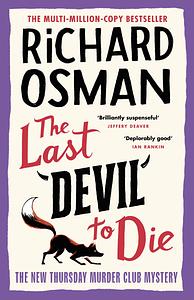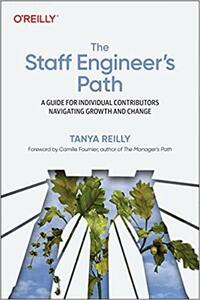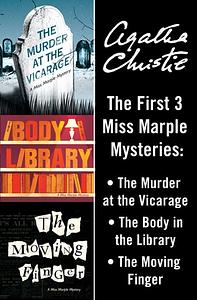Take a photo of a barcode or cover
books_are_nice_and_enjoyable's Reviews (257)
Loveable characters:
Yes
Yes, there's a murder mystery included in this book, and the main characters spend a lot of time solving that mystery (and the 'related complications'), but that storyline is secondary to the main story being told here.
I find myself preferring to read Osman alone. He makes me cry.
This is a wonderful book.
I find myself preferring to read Osman alone. He makes me cry.
This is a wonderful book.
This one took a long time to finish because I found myself simply needing a break from this story. There was never any question I'd return to it, and I did, and this was a very fine conclusion to the narrative.
I have previously criticized Sanderson for not being willing to kill off main characters, instead always finding ways to save them at the last minute/second by sometimes frankly ridiculous deus ex machina plot devices which to me tend to make the narrative lose its force and momentum; how are you to believe that the story you are reading is 'a story of life and death', that the heroes are doing 'dangerous things', if nobody important ever dies? I was worried Sanderson's efforts and involvement here, trying to help finish Jordan's masterpiece, might to some extent 'taint' the work by having Sanderson jump in and 'save everybody'. This was not so, which was very important and made the end of the story much more powerful. Sanderson did leave a heavy thumbprint on some parts of this book, but if you can disregard the occasional thinly-veiled allusions to Jesus and similar stuff then you'll most likely find this book a very enjoyable ending to Jordan's wonderful series.
I have previously criticized Sanderson for not being willing to kill off main characters, instead always finding ways to save them at the last minute/second by sometimes frankly ridiculous deus ex machina plot devices which to me tend to make the narrative lose its force and momentum; how are you to believe that the story you are reading is 'a story of life and death', that the heroes are doing 'dangerous things', if nobody important ever dies? I was worried Sanderson's efforts and involvement here, trying to help finish Jordan's masterpiece, might to some extent 'taint' the work by having Sanderson jump in and 'save everybody'. This was not so, which was very important and made the end of the story much more powerful. Sanderson did leave a heavy thumbprint on some parts of this book, but if you can disregard the occasional thinly-veiled allusions to Jesus and similar stuff then you'll most likely find this book a very enjoyable ending to Jordan's wonderful series.
The content itself is decent and covers a wide range of diseases and skin signs/manifestations, everything from some relatively harmless and self-limiting conditions to some cases of Very Bad News (...these do exist in the context of dermatology too! It almost felt like the authors wanted to remind you of this at the end of the book, by including that awful erythema gyratum repens case at that point).
But although the content was decent, some aspects of the reading experience was not. The Kindle version was infuriating to deal with, with two particular problems springing to mind:
1) This book could not actually be read on my Kindle device, as the device refused to open the file due to some error/compatibility issue, so I had to read it on my laptop instead.
2) The text is awful to work with if you like me are used to making highlights in the text. This is a medical textbook, what do you expect? Some words in the text I was physically unable to select with either the mouse or keyboard inputs (meaning if I wanted to highlight that specific word, well, good luck, not gonna happen); if you tried to do it anyway the application would 'jump' to the next or previous line and there was no way to only mark the word in question. Similarly there were problems with highlighting entire lines/sections where, when trying to highlight a passage it might take 5 times as long as usual because it would be very difficult to make sure the highlight did not include irrelevant words which would 'join the selection segment' due to poorly supported text interactions in general.
Presumably the problems related to point 2 were the result of a semi-failed e-book conversion of a physical copy, the user experience at least gave this impression. You could interact with (most of) the text, but they didn't make it easy for you, and that made the reading experience much worse than it could have been, which was really a shame as most of the book was actually decent enough.
But although the content was decent, some aspects of the reading experience was not. The Kindle version was infuriating to deal with, with two particular problems springing to mind:
1) This book could not actually be read on my Kindle device, as the device refused to open the file due to some error/compatibility issue, so I had to read it on my laptop instead.
2) The text is awful to work with if you like me are used to making highlights in the text. This is a medical textbook, what do you expect? Some words in the text I was physically unable to select with either the mouse or keyboard inputs (meaning if I wanted to highlight that specific word, well, good luck, not gonna happen); if you tried to do it anyway the application would 'jump' to the next or previous line and there was no way to only mark the word in question. Similarly there were problems with highlighting entire lines/sections where, when trying to highlight a passage it might take 5 times as long as usual because it would be very difficult to make sure the highlight did not include irrelevant words which would 'join the selection segment' due to poorly supported text interactions in general.
Presumably the problems related to point 2 were the result of a semi-failed e-book conversion of a physical copy, the user experience at least gave this impression. You could interact with (most of) the text, but they didn't make it easy for you, and that made the reading experience much worse than it could have been, which was really a shame as most of the book was actually decent enough.
Accelerate: Building and Scaling High Performing Technology Organizations
Jez Humble, Gene Kim, Nicole Forsgren
Some of the data is interesting, but overall this was a disappointing read. The book is very much written for a non-technical 'business audience', which made the book very hard for me to read as I dislike such books with a passion.
The authors are quite obviously overconfident about the findings they discuss in the book.
The authors are quite obviously overconfident about the findings they discuss in the book.
This one is hard to rate. I found it a hard read in part because the author is in my opinion simply not defining his terms adequately. The coverage is high-level, it's supposed to be high-level, but in some parts I found that I wasn't really sure what the level was even about.
It's far from all bad, the author gets some of the ideas across reasonably well, and those ideas are good ideas. But still a slightly disappointing read.
It's far from all bad, the author gets some of the ideas across reasonably well, and those ideas are good ideas. But still a slightly disappointing read.
An enjoyable and instructive book.
Giving a book containing three different books one rating is obviously not an easy thing to do, but I decided to try anyway. The Murder at the Vicarage was not really all that good, the other two were okay; I liked The Moving Finger the best of the three, although it was slightly spoiled by the fact that I gradually came to recall the resolution while (re-)reading the book.









